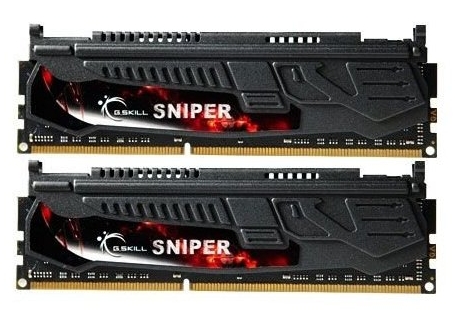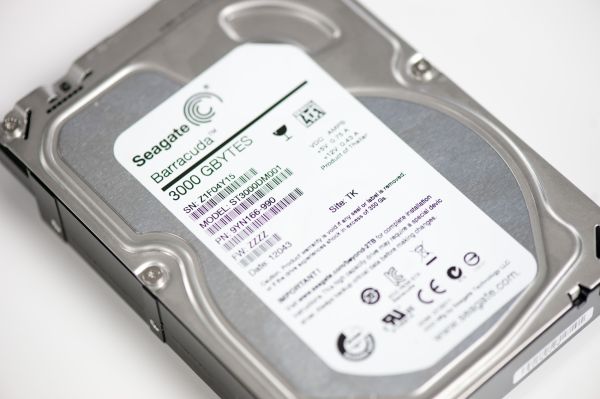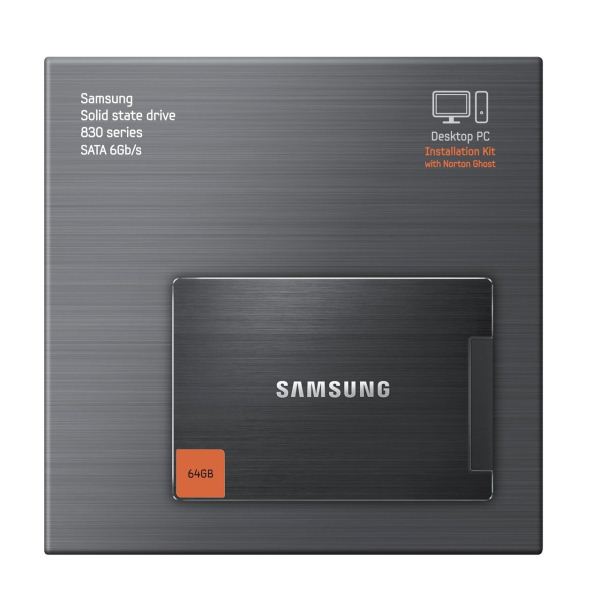AMD Llano HTPC Builders Guide
by Ganesh T S on June 5, 2012 8:02 AM ESTAlmost all present-day memory modules are at least DDR-1333. Depending on the APU chosen, the reader should go for DDR3-1600 or even DDR3-1866, as the added bandwidth can improve the iGPU performance in particular, and there is not much point in purchasing a module with lower speeds than what the APU natively supports. It is always possible to run higher rated memory modules at lower speeds if one wants to save power or reduce heat, and it is generally better to purchase modules with lower latency specifications, as this has the potential to improve performance in games and sometimes even for renderers such as madVR.
For most HTPC applications, 4GB of memory is more than enough. However, if you are repurposing the HTPC for other tasks such as intenstive video and photo editing, it might be worthwhile to invest in 8GB of memory. While performance typically does not vary between brands (assuming the same timings and clock speed), reliability might. It is therefore essential to choose the memory vendor and model carefully.
Some of the memory kits we recommend for the lower-end APUs (A4-3300 and A4-3400) are below. While all memory modules should work with all motherboards in theory, in practice that's not always the case, particularly if you're going to run low voltage modules. We recommend checking motherboard vendor compatilibity lists if you're not willing to deal with the potential need to return your memory kit for a more compatible set.
- G.SKILL Sniper Low Voltage Series 8GB (2 x 4GB) DDR3-1600: This kit operates at a lower voltage (1.25V) compared to similar kits, and can run cooler. The timing is also quite good at 9-9-9-24 when operating at 1600MHz. Coming in at $52, this is one of the best kits for a low power HTPC.

- G.SKILL ECO 8GB (4 x 2GB) DDR3-1600: This kit also operates at a lower voltage (1.35V) and has excellent timing parameters of 8-8-8-24. However, it is a quad channel kit and can only be fully utilized with an appropriate motherboard. Priced at $100 it's somewhat expensive, but it may prove more compatible for some systems than 1.25V kits like the above Sniper Low Voltage.
- AMD Entertainment Edition 2GB (1 x 2GB) DDR3-1600: This is one of the cheaper alternatives, coming in at $16. It operates at the standard 1.5V with timing parameters of 9-9-9-24.
For the higher-end APUs, we recommend memory kits rated for DDR3-1866. At these speeds, it is not possible to get low voltage kits.
- G.SKILL Ripjaws X Series 8GB (2 x 4GB): This kit comes in at $75, operates at 1.5V, and has timings of 8-9-9-24. Users have reported that it overclocks effortlessly to 2133MHz. This makes it an idea candidate for HTPCs that will also serve as gaming rigs.
- Crucial Ballistix 2GB (1 x 2GB): Coming in at $21, it is quite cheap compared to the G.SKILL kit above, but you only get one fourth the total memory. It operates at the same 1.5V and has the same timings. Of course, the drawback is that even with four of these in an appropriate motherboard, you only have 8GB of memory while the previous kit can give you 16GB.

Moving on to storage options, the reader will have to take a stance on the HDD vs. SSD debate. While a cheap SSD might sound very tempting (and may even prove excitingly fast in the initial days), the choice must be made only after careful consideration. At AnandTech, most of the SSDs that get reviewed go into production machines. I have been using an OCZ Agility 3 240GB SSD in my personal laptop. It is based on the SandForce SF-2281 controller. Unfortunately, I have experienced annoying random BSODs whenever I try to hibernate or put the laptop to sleep even with the latest firmware. A quick search on the various SSD forums indicates that SandForce-based SSDs usually don't like hibernation or sleep mode. This is just something to keep in consideration, because it is quite common to put HTPCs in sleep mode when not in operation.
If you plan to use your HTPC just as a front-end for local media residing in a NAS/optical drive, a 128GB SSD should serve you well. On the other hand, if you are planning to use your HTPC as a recording or download machine, it is suggested that you go in for a 2TB or 3TB hard drive in addition to having a 64GB SSD as a boot drive. If the HTPC is to be used in the backend as a media server/download or recording machine (and a media streamer or some other device is going to be used in the front-end), a SSD is not needed at all.
We've selected an SSD and hard drive for use with HTPCs below:
- SAMSUNG 830 Series MZ-7PC064D/AM 2.5" 64GB SSD: Samsung's 830 series was well received by us, and Samsung has a good track record of reliability. At $90, the price per GB is much higher than the budget drives, but trust us, a worry-free experience even with unusual HTPC usage scenarios is worth it. If you want more storage in your SSD, a more cost effective purchase would be the SAMSUNG 830 Series MZ-7PC256B/WW 2.5" 256GB SSD that is currently on sale for $250.
- Seagate's Barracuda 3TB (ST3000DM001): This hard drive is currently priced at $158 on Amazon. It has 3x1TB platters and delivers better performance than the initial 5x600MB hard drives. For users that like to record TV shows and/or download media files, 3TB is definitely not overkill when it comes to hard drive capacity.












76 Comments
View All Comments
lwatcdr - Wednesday, June 6, 2012 - link
Even if you are going to use your HTPC to record video why have a local harddrive? You just need an SSD to boot from and then you can stream the rest. Now some of those boards would aslo make a good NAS as well.For a mini ITX case might I suggest this one that you just reviewed. http://www.anandtech.com/show/5867/bitfenix-prodig...
And for the CPU sound issue maybe a Corsair Hydro Series HD40 water cooling setup? Just some other options for people to look at. Frankly the new Pogoplug looks like it would do very nicely as a NAS box for not much money as well.
djfourmoney - Thursday, June 7, 2012 - link
I don't watch anything on Netflix.... Anyway my system never sees more than 20c and usually around 17c. I just built it so I haven't pushed it really, but I don't expect any problems.My external drives are louder than the stock HSF so I don't know what people are talking about. I also have full control over all the fan speeds inside the case, not just the HSF. Internal fans are running around 2000rpm.
Paired with a SATA III SSD it screams, from pushed on to up and running in 45 second. Most of the delay comes from the start up screen.
When I first put it together, I went to Can I Run This and found many games I would be interested to play will run on this no problems. Yes you can get a cheap Celeron Sandy Bridge and a $50-$70 video card to do the same thing, but I already has a HD4670. I put that in my mom's machine as I don't need it and it won't Hybrid Crossfire with it anyway. I may for sh*ts and giggles get a HD6670 but I will wait until the 7000 series cards come out so the price will drop.
Once the HDD prices drop more and closer to 2011 pre-flood levels, I will get rid or at least re-assign my externals to the server and move all its data to another 2 or 3TB drive on my WHS 2011 build.
I'm pleased with this and its an update of my v1.0 HTPC which was Athlon 64x2 5000+ BE which has some thermal issues now, can't even do video encoding on it without it going thermal and shutting down. Not sure what power draw is but I'm sure its less than that plus the video card with ran off bus power.
BPB - Thursday, June 7, 2012 - link
What is your build?Tujan - Friday, June 8, 2012 - link
Both AMD and INTEL have their own implementation of utilizing the codecs involved with running content for a HTPC. If you look at some of the Anandtech.com benchmarks you'll notice that Intel systems typically render quicker in ''rendering-transcoding'' tests. However cross referencing a 'typical pc system',in that "good enough" scenario is difficult to access.Basically you want both "rendering AND transcoding" performance characteristics for your system. Intels system which utilizes the 'hyperthreading',typically in the benchmarks outperforms those in an AMD system.
In the same situation over time based tests. Perhaps someone at Anandtech.com can elaborate on just how,and what is used between the two different proprietors.
Believe that however 'good enough',is probably 'any 4 core cpu for either AMD,or Intel. Look at the benchmarks,and choose carefully,since a system will want more that 'doing videos'. The codecs,are for the most part- cpu intensive. While having 'good /fast graphics',is where the Intel juggernaut,differs from the AMD juggernaut.
Use a fast SSD,4 core processor,with adaquete and implementable graphics - as well as adaquate and implementable 'rendering-transcoding'. Fast DDR3 1600 or better,64 bit operating system that can run the apps you want.
'Good enough'' is actually a fairly thin range of equipment when your a DIY,and buying your own. As the benchmarks will show.
Like that wooden case.
didis - Monday, June 11, 2012 - link
Trinity is better in every waydrizzo4shizzo - Friday, June 15, 2012 - link
This is kinda off topic but... maybe someone will chime in anyway and save me a bunch of time or money or both.Recently replaced my main desktop and looking to re-use the old one as an HTPC.
What problems do you fore-see using an old dual core socket 939 Athlon2 3500+ with an NVidia 7600 GT, and a Pinnacle HD PCI capture card receiving over the air HDTV?
All the components were high end at the time, should last a long time, so it's a shame if it sits idle (ie, Seasonic s12 power supply, asus a8n32 mobo, etc. I am not real worried about power consumption more about performance.
Plan is to use Myth tv / Ubuntu. Hoping I don't need to shell out for an actual HTPC. This box would record the live TV streams and also sit next to my TV for viewing, and possibly serve the content to other myth boxes.